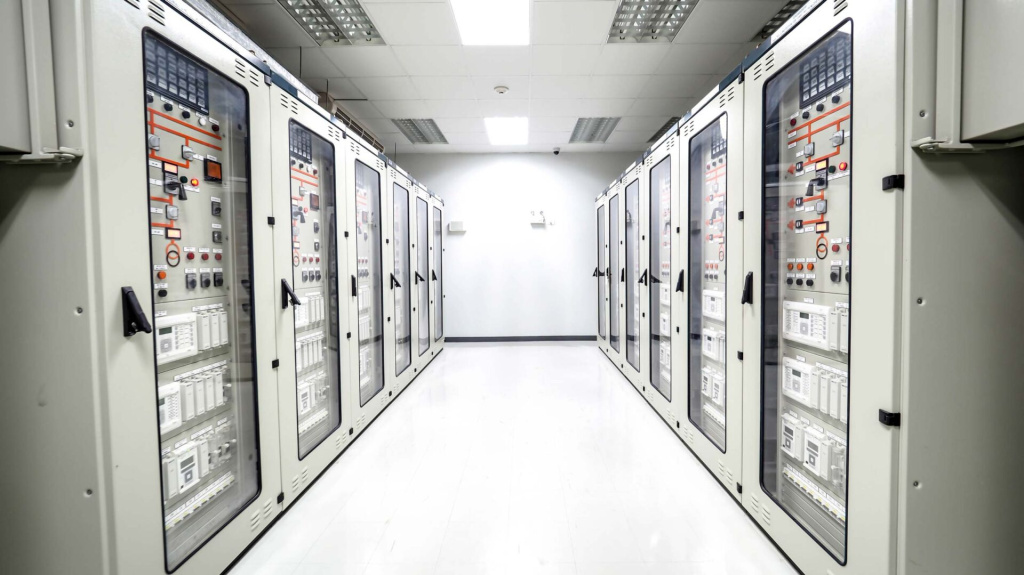Co-authors: Nargis Hurzuk (Statnett) and Steinar Fines (Tensio TN) –

The digitalization of substations is a “logical next step” that offers many benefits to grid companies, but it comes with its own set of challenges with regards to energy metering.
The ECoDiS-project held a workshop about metering in digital substations. This was a hybrid workshop, taking place at Værnes and online. Energy metering has been identified as one key challenge slowing down the digitalization of substations. Revenue metering must be correct for energy settlement and billing of customers. This is important for the energy markets to function properly and for the customers to trust the network operators (Distribution system operators – DSO and Transmission system operators – TSO).
Today, there are established standards, tests and methods of calibration and verification to ensure that the energy metering is correct. Digitalization of the metering chain constitutes a radical change for energy metering.
Metering in a traditional substation
Traditionally, the energy metering chain is separated from the protection chain. Protection of the substation is crucial for power grid operation and relies on signals arriving at the right place at the right time. Protection devices and schemes are tested regularly, and the Norwegian regulator (NVE) regulates this through the “kraftberedskapsforskriften” (contingency regulation).
Some of the values needed for protection and metering are the same, but traditionally, separate metering chains and separate organizational units were responsible for protection and metering. Energy metering is under the jurisdiction of the Norwegian Metrology Service. There are requirements for new energy meters and also requirements for metering control provided by Statnett through KtM (metering requirements). The verification of fulfilment of the requirements must be performed by companies that are accredited in accordance with ISO 17025.
Metering in a digital substation
Digitalization of the substation, including installing LPIT (low power instrument transformers), has many advantages. The most important advantage of using LPIT is related to safety, as some conventional voltage transformers have exploded, with a risk of human injuries. But a key challenge is the energy metering. Digitalization enables the same physical components and data streams to be used for multiple purposes. This can be an advantage, but for energy metering this poses challenges:
- Should metering and protection use the same components and data streams? What are the pro and cons for this? Are there any potential risks?
- How to calibrate active component and the whole metering chain on site?
- How will metering quality be affected over time, and by which factors?
- How to document the accuracy in a digital metering chain?
- How to replace active component in the metering system during its lifespan?
The traditional metering verification is no longer possible in a digital substation. One solution is to verify metering using balance control. Balance control is a calculation making sure that the energy going into the substation, minus losses, it the same as the energy going out of the substation. If the balance is incorrect, it indicates that something is wrong, for instance with the metering.
In addition, standards and routines for testing and metering quality assurance must be updated. Vendors of energy meters must also be challenged to provide separate components/data streams for protection and metering. The energy sector needs to discuss the advantages and disadvantages of separation of metering and protection and most importantly WHERE the point of separation should be. The digitalization of substation includes a rethinking of routines and requirements. In some areas, traditional routines and requirements are not relevant anymore, like it or not, and new ideas and alternatives must be made to meet the aim (which is unchanged): correct energy metering for all customers connected to the power grid.
The ECoDiS-project will contribute with experiences from the live digital substation pilots on the subject of energy metering. In addition, the lab pilot in the Smart grid laboratory in Trondheim will contribute to more knowledge on these subjects based on laboratory tests. Hence, energy metering is an important challenge that must be handled in order to fully digitalize substations.

Participants at the workshop were project partners, in addition to invited speakers from VTT (Finnish research institute), Landis+Gyr (vendor of, among other products, energy meters) and Justervesenet (Norwegian Metrology Service).

In addition to measurement, the challenge is to develop unconventional current and voltage transformers with output in sample values. Here in Brazil we are developing an optical current transformer for digital substations.